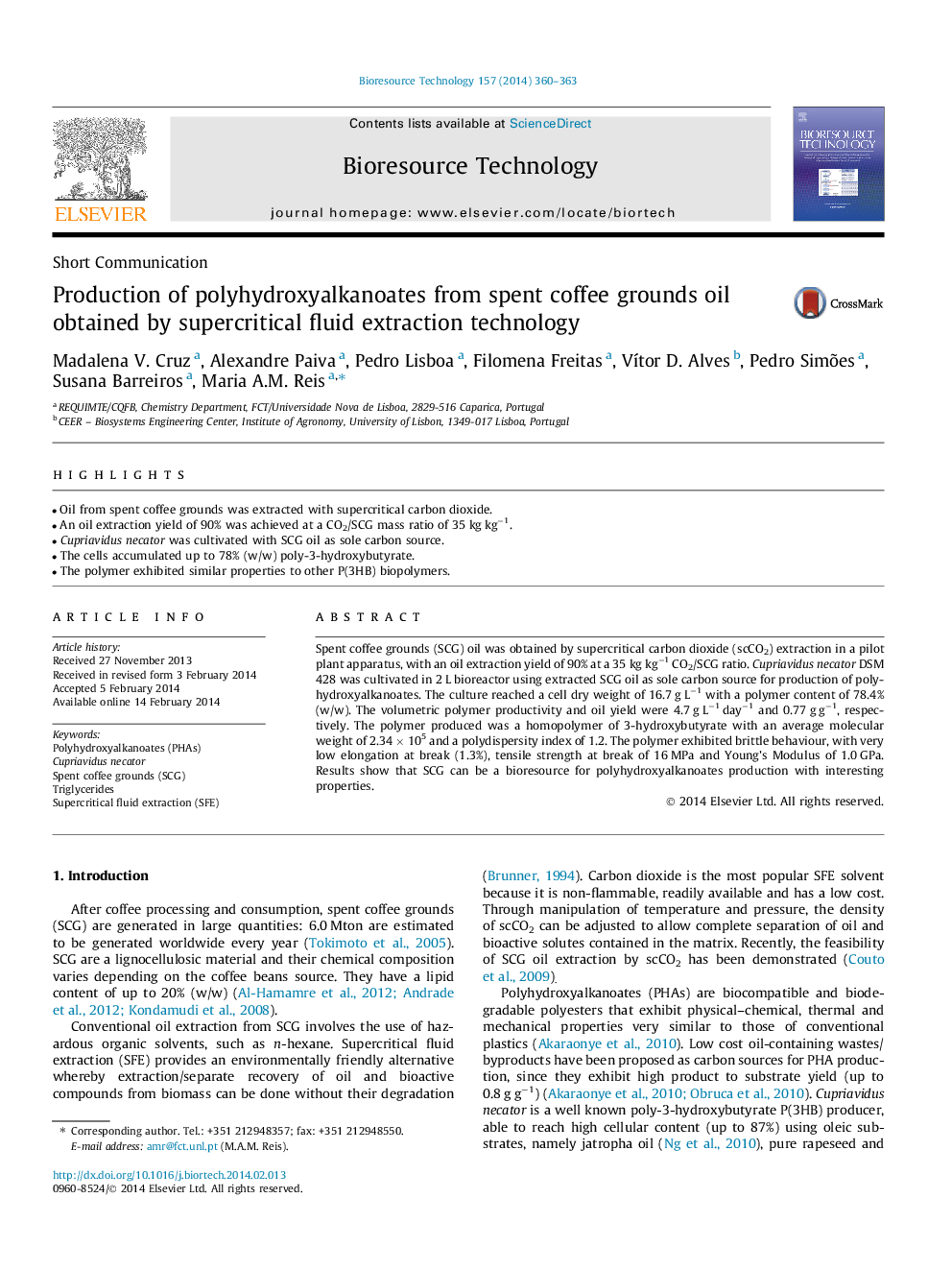| Article ID | Journal | Published Year | Pages | File Type |
|---|---|---|---|---|
| 680949 | Bioresource Technology | 2014 | 4 Pages |
•Oil from spent coffee grounds was extracted with supercritical carbon dioxide.•An oil extraction yield of 90% was achieved at a CO2/SCG mass ratio of 35 kg kg−1.•Cupriavidus necator was cultivated with SCG oil as sole carbon source.•The cells accumulated up to 78% (w/w) poly-3-hydroxybutyrate.•The polymer exhibited similar properties to other P(3HB) biopolymers.
Spent coffee grounds (SCG) oil was obtained by supercritical carbon dioxide (scCO2) extraction in a pilot plant apparatus, with an oil extraction yield of 90% at a 35 kg kg−1 CO2/SCG ratio. Cupriavidus necator DSM 428 was cultivated in 2 L bioreactor using extracted SCG oil as sole carbon source for production of polyhydroxyalkanoates. The culture reached a cell dry weight of 16.7 g L−1 with a polymer content of 78.4% (w/w). The volumetric polymer productivity and oil yield were 4.7 g L−1 day−1 and 0.77 g g−1, respectively. The polymer produced was a homopolymer of 3-hydroxybutyrate with an average molecular weight of 2.34 × 105 and a polydispersity index of 1.2. The polymer exhibited brittle behaviour, with very low elongation at break (1.3%), tensile strength at break of 16 MPa and Young’s Modulus of 1.0 GPa. Results show that SCG can be a bioresource for polyhydroxyalkanoates production with interesting properties.
